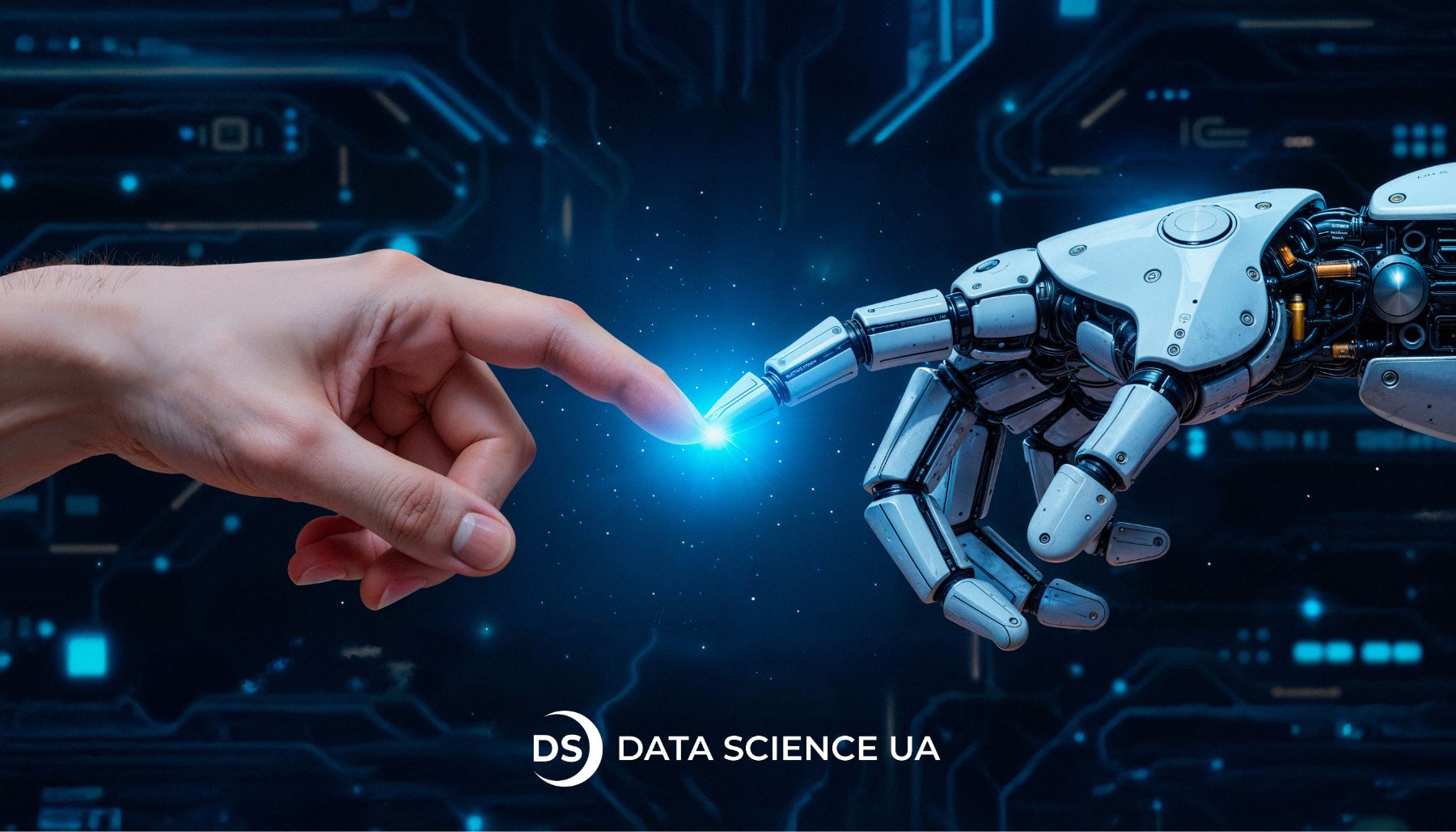The Importance of Generative AI in Banking
Generative AI is a major advancement in artificial intelligence. It allows machines to produce ideas, produce content, and predict difficult situations. Generative AI in banking is changing processes in this industry, where making informed choices is important through improving productivity, raising client loyalty, and fostering innovation. Generative AI in financial services offers tools that banks can use to effectively deal with the problems of growing competition, regulatory requirements, and changing customer expectations. In addition to simplifying internal procedures, generative AI in banking helps financial institutions to provide better client service, which guarantees continued growth and relevance in the digital era.
The amount of data generated in the financial sector continues to grow, requiring the use of advanced analytical tools that can give insightful information. This is where generative AI for financial services appears to allow banks to look at massive amounts of data and find patterns that would be challenging to find by people. That ability is critical in circumstances where making decisions quickly has a significant impact on profitability and customer satisfaction.
Generative AI Use Cases in Banking
Fraud Detection and Prevention
Fraud detection and prevention is one of the most important generative AI banking use cases. With fast analyzing huge amounts of transaction data, generative AI systems are able to recognize odd trends and potentially illegal activities before it becomes out of control. To enable timely activities, HSBC, for instance, uses AI-driven tools that track transactions and identify problems that can point to fraud. Furthermore, American Express analyzes transaction risks using machine learning algorithms, so it can successfully reduce fraud.
Also, gen AI in banking has the ability to adapt over time by catching up new fraud activities and changing criminal strategies. This continuous development makes the system an important instrument in the ongoing fight against fraud by improving its ability to identify and react to new threats.
Customer Service Automation
With virtual assistants and clever chatbots, generative AI banking has changed customer service. These modern tools can deal with a broad range of client requests, from account balances to transaction queries, greatly cutting down on wait times and improving service effectiveness. Bank of America, for example, uses its virtual assistant, Erica, offering consumers specific financial advice and support to boost the overall customer experience. Wells Fargo has deployed chatbot development service to speed up correspondence and improve client inquiry response times.
Generative AI in banking solutions can work all day and night, providing quick help and letting human workers focus on more difficult problems. A better service approach that can greatly increase client happiness and loyalty is the final result.
 Image from Pexels (source)
Image from Pexels (source)
Personalized Banking Experiences
Nowadays customization is very important and generative AI for banking allows them to customize their offerings to meet the needs of every client in particular. AI can make specific recommendations for savings plans, investments, and financial goods using consumer data, tastes, and behaviors. With this feature banking is more interesting and practical. As an example, Citi studies customer spending habits with generative AI in banking algorithms to present personalized product and financial suggestions. In order to provide clients with advice that is in line with their financial objectives, J.P. Morgan Chase also uses AI to develop customized investment plans.
Customers feel more appreciated when their specific demands are met, which increases customer loyalty and improves the customer experience.
Risk Management
Risk management is one of the greatest generative AI use cases in banking. It can simulate different market situations and test financial plans.This makes banks stronger because they can find potential risks and make plans to avoid them.Goldman Sachs uses generative AI in banking to predict market conditions and understand how they might affect their investments.They can see different economic situations and make smart choices using advanced computer programs. Also, banks are more likely to create plans for investing money and managing risks when they can see and study risk signs.
Credit Scoring and Underwriting
Credit scoring has historically depended on a limited set of data points. This approach is improved with generative AI in banking, which includes more types of elements, such as past transactions and social data. As a result, credit ratings are more accurate, which helps banks make wise lending choices and increase credit availability for marginalized groups. ZestFinance provides credit scores for people who might not have traditional credit histories to evaluate alternative data sources. In addition to helping banks in making better decisions, this tactic makes finance available to a large number of clients. Also, the application process may be sped up using generative AI in financing, saving customers time and improving their loan-seeking experience.
Optimization of Loan Processing
Loan processing can be a challenging and complicated procedure. This procedure is simplified with generative AI in banking, which automates documentation, validates data, and evaluates applications more rapidly. This improves the client experience while also speeding up loan approvals. Lendio analyzes loan applications using AI algorithms, which speed up approvals and improve the small company loan procedure in general. For example, Kabbage not only provides small business loans but also automates financing with AI, significantly reducing the time required to make loan decisions.
Banks can increase customer satisfaction and retention rates through automating the loan application process.
Cybersecurity Enhancement
In the case that cyber threats increase, generative AI aids in strengthening cybersecurity protocols.Generative AI can discover any security breaches and take immediate action to protect private client information through looking at network traffic and spotting irregularities. AI is used by digital bank N26 to keep an eye on transactions for indications of fraud and guarantee a safe banking environment. The platform’s overall security is improved by PayPal’s adoption of AI-driven security features to safeguard user accounts and identify fraudulent activity.
Because generative AI is proactive in cybersecurity, banks can keep ahead of possible threats and protect the data of their clients.
 Image from Pexels (source)
Image from Pexels (source)
Benefits of Generative AI for Banking
Enhanced Operational Efficiency
Generative AI greatly improves operational efficiency by automating repetitive jobs and simplifying procedures. This enables banks to concentrate on higher-value operations and deploy resources more efficiently. For instance, Santander has found that deploying AI-driven solutions across multiple departments has improved operational efficiency. Cutting back on manual procedures improves overall efficiency by reducing mistakes made by people and saving time.
Improved Customer Experience
Personalized interactions, faster reaction times, and increased customer satisfaction are all results of generative AI integration. Customers gain from specialized assistance and services, which promotes retention and loyalty. High customer satisfaction rates are the outcome of Chime, a neobank, using AI to deliver a smooth and intuitive experience. By learning about their clients’ needs and interests, banks may offer a more interesting service that appeals to them.
Improved Risk Control
Because generative AI can scan vast, complex data sets and generate scenarios, banks now have better tools for risk management. This proactive strategy helps in detecting weak points and becoming ready for future economic downturns. AI is used by Fidelity Investments to measure investment portfolio risk, enabling them to make well-informed decisions to safeguard customer assets. Banks can create backup plans for unforeseen market fluctuations by using the simulation capacity.
Advanced Fraud Detection and Prevention
Generative AI improves fraud detection systems in lowering false positives and allowing quick action against fraud through its real-time monitoring features. Through the use of AI algorithms to scan transactions for unusual activity, Visa has considerably decreased fraud rates within its network. The continuous advancement of these technologies ensures that banks will be able to adapt to emerging scams as they emerge.
Data-Driven Insights
Generative AI provides banks with valuable insights through data analysis, enabling them to make educated decisions while improving their strategies in response to market and customer developments.American Express uses this data to develop new products and services that meet the needs and preferences of its customers. Banks can maintain their competitiveness in a fast-changing industry by using data effectively.
 Image from Pexels (source)
Image from Pexels (source)
Challenges of Implementing Generative AI in Banking
Data Privacy and Security Concerns
Despite all the challenges, skilled professionals are able to solve these issues. However we have to be aware of them and learn to stay away from them. The experts at Data Science UA know how to help your company! Learn more about AI development company.
Banks need to make sure AI systems respect privacy laws and that consumer data is secured. For example, in order to protect consumer data while using AI technologies, Wells Fargo has to improve its data security protocols. Strong security measures are required due to the possibility of data theft or exploitation.
Regulatory Compliance Issues
Regulations have changed along with generative AI. When banks integrate AI technologies, they must manage new rules to stay out of difficulty and keep in line. J.P. Morgan Chase has established specific teams to monitor regulatory changes and ensure that their AI programs fit with regulatory standards. It can take a lot of resources and constant attention to adjust to changing legislation.
Talent Shortage in AI Expertise
The banking sector faces a lack of talent as a result of the rising demand for AI agent development company and machine learning experts. It may make it more difficult for generative AI projects to be implemented successfully. Although Goldman Sachs has made investments in internal training initiatives to develop talent, there is still intense competition for AI specialists. Banks must prioritize staff development if they want to ensure that they have the expertise to manage the complexity of AI technology.
Transparency and Explainability Challenges
Banks may find it challenging to articulate their decision-making procedures due to the complexity and opaqueness of generative AI models. Customers and regulators may become less trusting as a result of this lack of openness. In order to preserve openness and foster confidence in their AI-driven judgments, HSBC highlights the significance of creating explainable AI systems.
Rapidly Evolving Technology
Because AI technology grows so quickly, banks must constantly adapt. It can be difficult and expensive to stay up to date with the most recent advancements. To explore cutting-edge AI technology and make sure they stay at the top of the market, Barclays has set up innovation labs. In order to meet client expectations and stay competitive, banks need to be proactive in implementing new technologies.
Resistance to Change within Organizations
In financial businesses, generative AI implementation frequently necessitates a cultural change. Successful adoption may be slowed by leadership and staff resistance to change. In order to help with the integration of AI technology, ING has concentrated on cultivating an innovative and adaptable culture. Long-term success depends on fostering a modern outlook.
 Image from Pexels (source)
Image from Pexels (source)
Future Trends of Generative AI in Banking and Finance
Several trends will continue to influence generative AI’s future in banking as it develops further:
Greater Personalization: To improve consumer engagement through hyper-personalized products and services, banks will use generative AI more and more. For example, Chime is already looking into how to offer more individualized financial guidance depending on each person’s spending patterns.
Integration with Blockchain: When companies combine generative AI and blockchain technology, transactions may become more open and safe, which would increase consumer confidence. Ripple is one example of a company exploring the synergies between these technologies. Costs can be decreased and transaction processes simplified by combining these two technologies.
Improved Predictive Analytics: Generative AI will make it possible for more advanced predictive analytics, which will help banks more precisely predict shifts in the market and client demands. To improve its investment strategy prediction models, Morgan Stanley is investing in artificial intelligence. Banks will be able to keep ahead of industry trends and make data-driven decisions thanks to these capabilities.
Greater Focus on Ethics: In order to preserve consumer confidence and regulatory compliance, banks will need to give responsible AI practices a priority as worries about data privacy and AI ethics increase. Citi is already putting ethical standards for AI development and use into practice. For AI technology to be used responsibly, ethical frameworks must be established.
Advice for Implementing Generative AI in Banking
Prior to growing, start small by using pilot projects to test generative AI applications, allowing for adjustments based on early findings. Investing in training is important for guaranteeing that employees have a basic understanding of AI technologies and how they affect banking operations. As AI develops further, ongoing education will become increasingly important. Focus on data security at the same time, giving data privacy and security priority to gain the trust of your customers and comply with legal requirements by putting strong cybersecurity measures in place. Working with professionals is also essential; collaborate with AI experts or companies to benefit from their knowledge of creating and deploying generative AI solutions, which can hasten development and improve results.
As these initiatives are put into action, closely monitor their outcomes to identify areas that require improvement. Regular reviews also aid in optimizing tactics and technology. Developing an innovative culture inside the company will promote receptivity to new technology and facilitate the adoption of AI. Involve key stakeholders in the decision-making process to ensure AI initiatives satisfy organizational goals and customer expectations. To define success and ensure that projects produce quantifiable outcomes, you should also establish clear goals.
You’re Officially in the Loop!
Banks that use generative AI will probably have a competitive advantage as the technology advances and establish themselves as industry leaders in the financial services industry. Banks can lead the way in innovation and client happiness while navigating the intricacies of the contemporary financial sector through applying generative AI’s capabilities.
 Image from Pexels (source)
Image from Pexels (source)
FAQ
What is generative AI and how does it differ from traditional AI?
Generative AI refers to algorithms that can create new content or data based on learned patterns from existing data. Generative AI has the ability to generate novel outputs like writing, graphics, or music, in contrast to classical AI, which mostly concentrates on classification or prediction
How will generative AI affect the financial services industry?
Generative AI is significantly altering the financial services industry.It is changing how decisions are made, how work is completed, and how clients are treated.Its ability to automate tedious and difficult processes like data entry, document verification, and transaction processing is one of the primary enhancements.This helps financial companies save money and work faster, allowing employees to focus on more important tasks that need human creativity and insight.
In order to detect fraud, generative AI is also crucial for rapidly evaluating vast volumes of transaction data.Compared to prior systems, AI can identify anomalous patterns and issues more quickly and precisely, protecting consumers and minimizing financial losses.
What processes in banking can be automated using generative AI?
Generative AI can help banks with tasks like customer service, loan processing, checking for rules, finding fraud, and creating personalized marketing. Generative AI and banking can make work faster and improve customer satisfaction.Banks can boost their operations and get ready for the future by utilizing generative AI, which will strengthen their relationships with clients.





